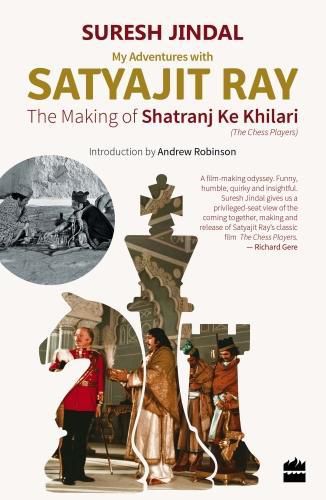Readings Newsletter
Become a Readings Member to make your shopping experience even easier.
Sign in or sign up for free!
You’re not far away from qualifying for FREE standard shipping within Australia
You’ve qualified for FREE standard shipping within Australia
The cart is loading…






For those who know their Indian cinema, Shatranj Ke Khilari is film-maker Satyajit Ray’s only feature film in Hindi/Urdu and also his most expensive film, employing lavish stage design and stars of both Mumbai and Western cinema. A period piece set in nineteenth-century Lucknow, capital of the state of Oudh, the film revolves around the court of the flamboyant artist-king Wajid Ali Shah against the backdrop of the East India Company’s avaricious annexation of Oudh in 1856. Jindal, Ray’s young and artistically committed producer of Shatranj Ke Khilari, looks back on the gripping story of how Ray came to direct the film despite his unequivocal declaration that he would never write and direct a film that was not in Bengali. Quoting extensively from Ray’s fascinating unpublished letters to Jindal, it evokes the driving passion, original historical research and trademark devotion to detail that Ray brought to every aspect of the production.
$9.00 standard shipping within Australia
FREE standard shipping within Australia for orders over $100.00
Express & International shipping calculated at checkout
For those who know their Indian cinema, Shatranj Ke Khilari is film-maker Satyajit Ray’s only feature film in Hindi/Urdu and also his most expensive film, employing lavish stage design and stars of both Mumbai and Western cinema. A period piece set in nineteenth-century Lucknow, capital of the state of Oudh, the film revolves around the court of the flamboyant artist-king Wajid Ali Shah against the backdrop of the East India Company’s avaricious annexation of Oudh in 1856. Jindal, Ray’s young and artistically committed producer of Shatranj Ke Khilari, looks back on the gripping story of how Ray came to direct the film despite his unequivocal declaration that he would never write and direct a film that was not in Bengali. Quoting extensively from Ray’s fascinating unpublished letters to Jindal, it evokes the driving passion, original historical research and trademark devotion to detail that Ray brought to every aspect of the production.